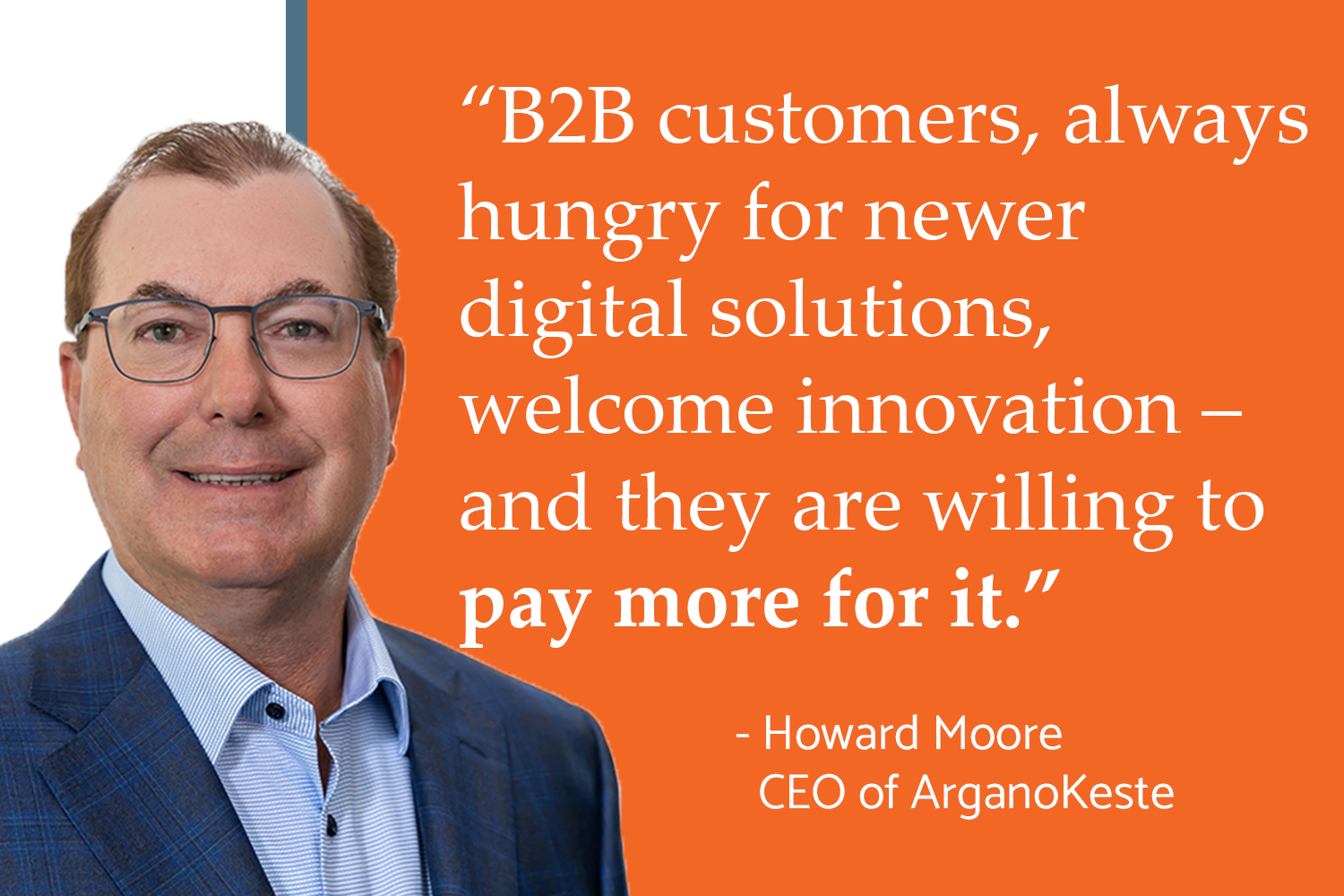Accelerate Your Sales Process Through CPQ
CPQ has been around for decades despite being a hot term of late, but some people still wonder what it actually is? Is it a piece of over-hyped software that’ll be forgotten in ten minutes? Does it replace my sales team? Is it just another in a seemingly endless stream of Market-speak Acronyms of Little Value (MALV)?
Before we discuss the value of a thing, whether we should care about a thing, let’s correctly identify the thing. So…
What is CPQ?
CPQ is an acronym for Configure, Price Quote (CPQ). And while yes, this is another acronym for us to keep track of, this is one you’ll grow to love with a tattoo level of fondness if you are looking to streamline your B2B customer journeys. And while it is essentially a piece of software, it has become much more than that, thanks in part to the global power and omnipresence of The Cloud. This software – in fact, this strategy – can now be applied at unprecedented scale and speed to bring modernization and automation benefits to what oftentimes is a very antiquated, laborious, and error-prone sales process.
If your organization is actively looking for ways to achieve digital transformation in a B2B environment, a sound CPQ strategy can greatly reduce your customer journey, increase secondary and tertiary sales, and free up your sales team to focus on their namesake occupation through modernization of your existing digital commerce strategy.
Great, now we know what CPQ stands for, and have a general understanding of how it works. Let’s dive down into greater detail and see some real-world examples of CPQ in action.
Highly-Configurable Products
 Let’s say you manufacture bicycles – and you then sell those bicycles to your clients who in turn sell them to the public. A bicycle is a highly-configurable product with historically thin margins, compounded by the added headache of being an ever-evolving product in and of itself as new technologies – and customer preferences – emerge. Sure, the core technology is the same: a frame, pedals, seat, handlebars, etc… but those are all being made out of new materials, being tasked to new applications, and so forth.
Let’s say you manufacture bicycles – and you then sell those bicycles to your clients who in turn sell them to the public. A bicycle is a highly-configurable product with historically thin margins, compounded by the added headache of being an ever-evolving product in and of itself as new technologies – and customer preferences – emerge. Sure, the core technology is the same: a frame, pedals, seat, handlebars, etc… but those are all being made out of new materials, being tasked to new applications, and so forth.
The very nature of the product you are selling requires a complex and ever-changing set of rules to define:
- What the product is (and is comprised of) at a given point in time
- What customizations can and cannot be considered, and their impacts
- What opportunities for discounts at scale can be offered
- What localized (geographical) considerations must be factored into pricing (e.g tariffs)
- How all of these considerations affect production back upstream
Now suppose your #1 customer, who sells your bikes retail, chooses a certain frameset, but then wants to maybe swap a seat from one build to another, you are suddenly faced with multiple dilemmas:
- Can this even be done?
- How much will it cost?
- How does this affect my margins?
- Can the customer wait five days for me to check back with my suppliers, run it through accounting, and get approval from a sales manager?
- Will my competitor solve this problem for me, in the worst way?
So to avoid those pitfalls, how can your salesperson enter into such a meeting pre-armed with the information they need to give an updated quote to your largest customer? Right there, on the spot, in the field, in real-time? CPQ gives them that power.
At its core, this is the type of problem that CPQ solves, but at a much greater scale, and on a much shorter timeline. Through rules-based logic, a truly adaptive CPQ solution allows you to create as complex a configurator for your product line as you need, going a step further by recommending supplemental services, products, training, and discounts – things even the best salesperson with the best sales process may overlook at times. With CPQ, you can instantly reconfigure your customer’s order based on this new request, and new pricing will be created dynamically, with a new quote generated right there on the spot.
With CPQ in your sales arsenal, your sales team is empowered to embrace customization requests from clients, without the overhanging fear of pulling all-nighters to make it all “work”.
Supercharged Sales Teams
Now let’s take CPQ one step further, out of the virtual showroom and into the sales process proper. When you consider the “traditional” way in which preparing a quote is done, you think of a multi-step process, something like:
- You peruse your entire catalog, assembling a pared-down list of products and possible configurations (based on your external knowledge) that you hope will appeal to your customer without bogging them down with too many choices.
- Once you have a list of products, you get your latest pricing sheet(s) and extrapolate a menu of what your suggested products, in your suggested bundles, will cost the customer, before any discounts.
- Now you have to go over these documents and pricing to see what discounts may apply, what pricing exceptions are unique to the client, and if they are just a small percentage away from “unlocking” a new level of discounted pricing, what products make sense to get them there.
- If (and this is a big if) you know that they are already either 1) seeking a direct discount, or 2) are in effect requiring a discount due to budget constraints, you have to see if this falls in line with your current pricing strategies. And if it doesn’t? Then you get to run it up the chain of command and wait. And wait. And explain to your customer that “we’re working to get you the best deal” and hope that your competitor hasn’t already met their price.
- Now that you’ve selected a product package that makes sense for your customer, have calculated a base price, have also received confirmation that we can meet their requested discount – now you get to put all of this data into a one-time, once-use, soon-to-expire quote. Then you check and recheck for errors lest you sell at the wrong price. Then you double-check to make sure that the pricing you were emailed is the latest. Then you call another coworker to make sure there isn’t a huge promo planned for 2 weeks from now that’ll blow your current quote out of the water and make you look like something other than the great salesperson you are.
Sound about right? Sadly, this is what many sales professionals spend a downright shameful percentage of their day doing – creating quotes. With CPQ, you can streamline the sales process and therefore free up your salespeople to focus on selling, not data-entry, fact-checking, inter-departmental discourse, and graphic design. Just focus on the relationship and how to offer the best value to your customers and in turn increase your revenue. It’s a deceptively simple win that contains a huge amount of potential for organizations of all sizes.
Resource Protection
We’ve talked about the headaches you’ll save your customers and your sales teams, and while those are good, let’s think about those benefits in real terms, terms that your accounting and digital commerce teams will love.
Just looking at the most basic – and obvious – resource – time – we can extrapolate that into actual savings based on the axiom that “time is money”. Because, after all, it is.
If you have a sales team of say 15 people, and on average, they spend 50% of their time
One study conducted by Salesforce puts this figure at 66%, but for the sake of this discussion, let’s just say your organization is slightly more efficient than average.
– time you pay for – on the above-listed activities that are ancillary to the actual act of selling, activities that can be automated behind the scenes and still preserve the relationship between your sales team (read: your organization) and your most prized customers, that’s a huge number. If you pay, on average, $100,000 per year, that’s $1.5MM, and 50% of that is money spent on something other than their actual job description. What could your organization do with an extra $750,000USD per year? Now compound that figure by what your sales team can accomplish with twice the time devoted to sales?
Again, these are just the tangible costs. We haven’t even discussed the intangibles that can erode your bottom line, such as lost sales due to:
- Slow reaction times
- Erroneous pricing
- Overlooked discount opportunities
- Overlooked bundle, add-on sales opportunities
- Unprofessional quotes
These are the “hidden” costs that rarely show up in an annual report, but quietly contribute to the erosion of your sales programs, and can also severely impact the effectiveness of your sales professionals, professionals who are always in demand and may be inclined to look for an organization that has a better sales support structure in place. Sales professionals, let’s not forget, take their relationships with them.
Implementation
So we have a good understanding of what CPQ does, how it works, and what sort of clearly visual and sinisterly hidden pitfalls it can help your organization avoid. The question then becomes:
How do I employ a CPQ strategy that works for my organization’s digital commerce strategy?
Obviously, and we might be a little biased here, the best way is to partner with an organization that fully understands the CPQ process, and has a proven track record of deploying successful digital modernization solutions for organizations large and small. ArganoKeste understands how to implement a scalable CPQ solution – we partner with industry-standard providers such as Oracle and Salesforce – to set up your CPQ solution for success.
We can implement an Oracle CPQ solution that will seamlessly bridge the gap between your CRM (think Salesforce) platform and your existing Enterprise Resource Planning (ERP) provider, thus freeing up untold resources that you can reallocate towards increased sales, growth, efficiency, etc.
Here at ArganoKeste, we live and breathe digital commerce transformation, and our strategies have been proven time and again in real-world applications, providing real, tangible value to our partners.
If you’d like to see how ArganoKeste can help your organization achieve its digital transformation goals, let us know the best way to contact you, and we will be happy to schedule a time for a conversation.









